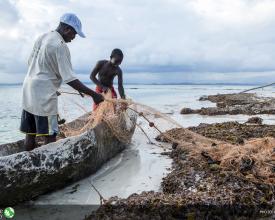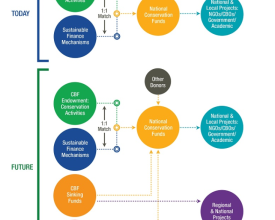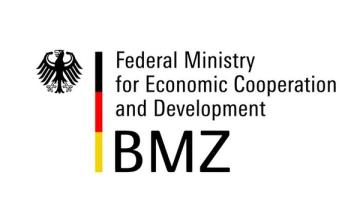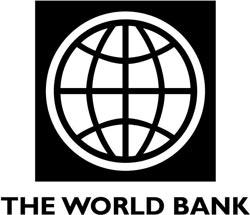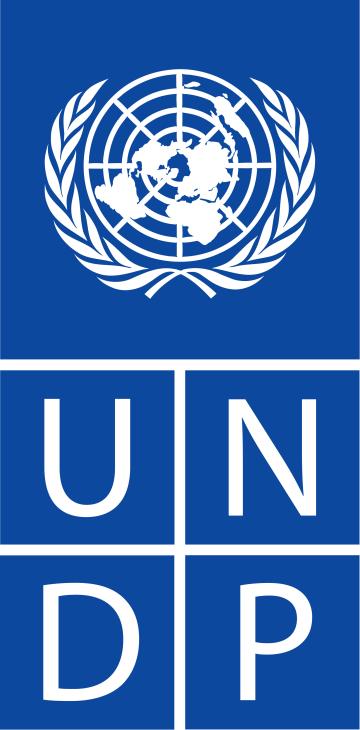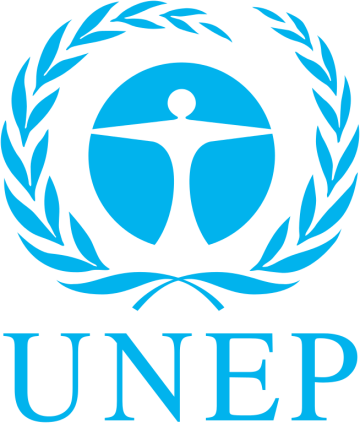
Une architecture régionale de financement durable pour la conservation
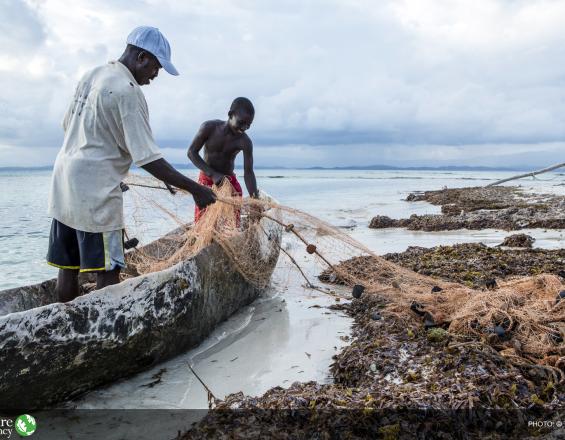
Le Fonds pour la Biodiversité des Caraïbes (CBF) est la concrétisation de la vision de créer un financement fiable et à long terme pour la conservation et le développement durable dans les Caraïbes. Le CBF et ses fonds fiduciaires nationaux pour la conservation forment l'architecture régionale de financement durable, qui soutient et incite les nations des Caraïbes à atteindre les objectifs de la Convention sur la diversité biologique (CDB), de l'Initiative pour le défi des Caraïbes et d'autres engagements internationaux et régionaux. Le CBF est un fonds parapluie doté d'un financement permanent (fonds de dotation) et non permanent (fonds d'amortissement).
Contexte
Défis à relever
- Ressources limitées pour la conservation dans les Caraïbes. Le CBF et l'architecture régionale de financement durable pour la conservation constituent une source de financement nouvelle et durable pour relever les défis environnementaux.
- L'environnement ne figure pas parmi les priorités politiques régionales. Le CBF et les NCTF seront essentiels pour rehausser le profil de l'environnement et de la conservation dans la région.
Emplacement
Traiter
Résumé du processus
Ces éléments décrivent cinq domaines clés de la conception, de la mise en place, de la mise en œuvre actuelle et future, ainsi que du suivi et de l'évaluation de cette solution. Bien qu'il y ait des aspects séquentiels autour de ces éléments, leur mise en œuvre s'est déroulée et se déroule souvent de manière parallèle. Par exemple, le CBF a été créé en premier et maintenant la plupart des fonds fiduciaires nationaux pour la conservation sont en train d'être établis. L'opérationnalisation des différents fonds fiduciaires ne se fera pas non plus en même temps. Entre-temps, le maintien de l'engagement des gouvernements et des partenaires est un facteur important pour tous les éléments constitutifs.
Blocs de construction
Engagement du gouvernement
Les gouvernements jouent un rôle clé dans la réussite de la collaboration régionale. Leur engagement politique en faveur des objectifs de la Caribbean Challenge Initiative (CCI) a été essentiel pour attirer les donateurs et les aider à atteindre ces objectifs, y compris la mise en place de l'architecture financière. Les gouvernements participent en tant qu'observateurs et/ou points focaux aux réunions des conseils d'administration des fonds fiduciaires régionaux et font également partie des conseils d'administration des fonds fiduciaires nationaux pour la conservation (NCTF).
Facteurs favorables
- Dialogue ouvert, transparent et direct avec les gouvernements.
- Avantages identifiables pour l'avancement des priorités nationales et régionales en matière de conservation.
- Engagement des donateurs et des partenaires à fournir des fonds et d'autres formes d'assistance technique.
Leçon apprise
- Le renforcement de l'engagement politique est un processus de longue haleine qui nécessite des contributions techniques et politiques à plusieurs niveaux du gouvernement, depuis le personnel technique jusqu'aux ministres/chefs de gouvernement les plus hauts placés, en passant par les postes d'encadrement moyen/supérieur.
- L'engagement des donateurs apporte aux pays une sécurité et une confiance supplémentaires en ce qui concerne leur engagement politique et le fait de savoir que les partenaires sont prêts à les aider.
Fonds fiduciaires nationaux de conservation indépendants (NCTF)
Le produit de la dotation du CBF sera acheminé par l'intermédiaire des NCTF qui, à leur tour, dirigeront le processus d'octroi de subventions pour les activités sur le terrain et dans le domaine de l'eau. Ils sont dirigés par des conseils d'administration composés majoritairement de membres non gouvernementaux reflétant un large éventail de secteurs et d'intérêts, et accordent des subventions à la fois au gouvernement et à la société civile.
S'inspirant des normes internationalement reconnues, les caractéristiques des NCTF qui seront soutenues par le CBF sont les suivantes :
- Objectif : Objectif aligné sur l'objectif du CBF.
- Composition du conseil d'administration : Composition et représentation larges, avec une majorité de membres de la société civile au conseil d'administration et sans qu'un seul groupe d'intérêt majoritaire ne domine le conseil d'administration.
- Membres du conseil issus de la société civile : Les membres du conseil d'administration représentent la société civile et ne sont pas uniquement sélectionnés par le gouvernement.
- Contrôle des actifs : Contrôle des actifs bien conçu et indépendant.
- Exigences en matière d'audit : Exigences en matière d'audit : exigences bien définies en matière d'audit externe annuel.
- Subventions : Octroi de subventions au gouvernement et à la société civile.
Facteurs favorables
- Un dialogue multipartite pour garantir la participation de tous les secteurs concernés aux structures de gouvernance.
- Des instruments juridiques clairs qui reflètent des structures indépendantes et garantissent les droits et les responsabilités des différentes parties prenantes.
Leçon apprise
- Il est difficile de trouver le bon équilibre entre la représentation du gouvernement et de la société civile dans les structures de gouvernance au niveau national. Les acteurs gouvernementaux peuvent avoir le sentiment qu'une structure de gouvernance majoritairement non gouvernementale les exclut de la prise de décision et la société civile peut estimer que des conseils d'administration majoritairement gouvernementaux aboutiront à des institutions inefficaces contrôlées par le gouvernement.
- Les bailleurs de fonds préfèrent nettement que la gouvernance des NCTF soit indépendante du contrôle gouvernemental, même si le gouvernement peut y participer.
- Il est essentiel de trouver un équilibre dans les instruments constitutifs des PFNL et dans d'autres accords entre les différents points de vue, besoins et exigences, et de rassurer toutes les parties prenantes sur le fait que la structure de gouvernance et le processus de prise de décision seront transparents et ouverts à tous.
Opérationnalisation réussie du fonds fiduciaire
Un personnel qualifié, une gouvernance efficace et des systèmes techniques performants sont essentiels à la réussite des opérations. Les éléments clés pour y parvenir comprennent la formation des fonds fiduciaires nationaux pour la conservation, du personnel et des membres du conseil d'administration, la mise en place de systèmes comptables clairs, des manuels d'exploitation, l'apprentissage à partir des meilleures pratiques, le mentorat et l'échange entre pairs.
À cet égard, le CBF a mis en place une formation sur son système comptable pour son personnel. Il est également devenu membre du réseau latino-américain et caribéen des fonds fiduciaires pour la conservation (RedLAC) afin d'apprendre des institutions similaires.
Facteurs favorables
- Dotation en personnel : Embauche d'un directeur exécutif très compétent. Du personnel de soutien supplémentaire pourrait également être nécessaire.
- Bureau : Mise en place des opérations logistiques initiales du bureau.
- Conseil d'administration : Mise en place et formation du conseil d'administration et du directeur exécutif.
- Commissions : Création de sous-comités du conseil d'administration et d'autres comités consultatifs.
- Élaboration d'un manuel de fonctionnement.
- Finances et comptabilité.
- Mentorat et développement organisationnel global.
Leçon apprise
- Le développement de tous les systèmes nécessaires (comptabilité, autres systèmes opérationnels) prend souvent plus de temps que prévu. Il est important de fixer des délais réalistes pour la mise en place d'une opération de FFC. Les tâches liées à la mise en place des opérations se multiplient rapidement.
- Le soutien des bailleurs de fonds et des partenaires, non seulement en espèces, mais aussi en nature, est essentiel au cours des 1 à 2 premières années d'activité.
- Des erreurs se produiront en cours de route et il est important de les reconnaître et d'y remédier rapidement pour continuer à aller de l'avant.
- Il est essentiel de disposer de conseillers formels et informels et d'autres types de soutien technique. De nombreux autres FFC sont actuellement en cours d'exécution et peuvent fournir des informations importantes dans ce processus. RedLAC est par exemple une ressource clé.
Plan stratégique et stratégie de collecte de fonds
Élaboré et mis en œuvre conjointement avec les donateurs, les pays et les partenaires, ce plan stratégique solide comprend les éléments suivants :
- consolider la mise en place de l'architecture du Fonds
- Ouvrir de nouvelles fenêtres thématiques et attirer de nouveaux pays pour qu'ils fassent partie de l'architecture.
- la mise en place d'une stratégie de collecte de fonds
- Établir un plan de marketing et de communication
- la mise en place d'un système de suivi et d'évaluation
Facteurs favorables
- Consultations : Un processus de consultation approfondi permettra d'élaborer un plan stratégique solide pour le CBF.
- Objectifs et indicateurs mesurables : Le plan doit comporter des objectifs et des indicateurs mesurables afin d'évaluer son efficacité.
Leçon apprise
- Il est essentiel que le plan stratégique soit un document inclusif avec une large participation de toutes les parties prenantes.
Surveillance du fonds fiduciaire commun
Deux systèmes de suivi compatibles en cours d'élaboration permettent de suivre les ressources financières et l'impact de la conservation dans les fonds fiduciaires régionaux et nationaux. Ensemble, ces systèmes établissent un cadre de suivi et d'évaluation solide pour mesurer l'impact, l'apprentissage organisationnel et les rapports des donateurs, en utilisant des indicateurs régionaux applicables.
Facteurs favorables
- Élaboration de rapports et d'indicateurs applicables à l'échelle de la région : De nombreuses sources d'information et d'éléments pour ces indicateurs sont déjà disponibles à l'intérieur et à l'extérieur de la région et n'auraient pas besoin d'être créées en vase clos.
Leçon apprise
- Tirer parti de l'expérience d'institutions similaires pour établir les paramètres appropriés du système de suivi et d'évaluation
Impacts
En tant que fonds fiduciaire régional pour la conservation, le CBF est une nouvelle source de financement dans les Caraïbes. À ce jour, neuf fonds fiduciaires nationaux pour la conservation (NCTF) sont légalement établis et à différents stades de devenir pleinement opérationnels, avec d'autres pays intéressés à se joindre au processus. En outre, tous les NCTF ont identifié et recherchent des mécanismes financiers durables supplémentaires pour financer les activités de gestion de la biodiversité. Trois NCTF ont signé des accords officiels avec le CBF et les paiements commenceront dans les mois à venir. Une fois que l'architecture sera pleinement opérationnelle, le CBF, grâce à sa dotation, devrait générer environ 1,5 à 1,8 million de dollars par an, qui seront acheminés par les NCTF. Les nouveaux mécanismes de financement durable mis en place par les NCTF correspondraient à ce montant. En outre, un nouveau fonds d'amortissement de 26,5 millions de dollars US axé sur l'adaptation basée sur les écosystèmes devrait contribuer de manière significative à la création de solutions d'adaptation pour les îles des Caraïbes.
Bénéficiaires
- Les fonds fiduciaires nationaux pour la conservation
- La société civile
- Institutions gouvernementales
- Organisations communautaires
Objectifs de développement durable
Histoire
à confirmer
